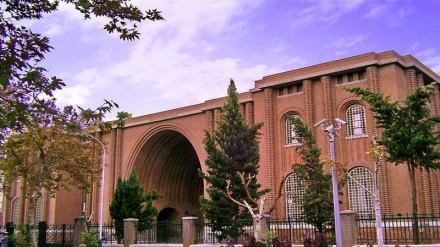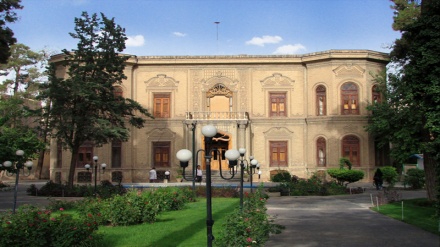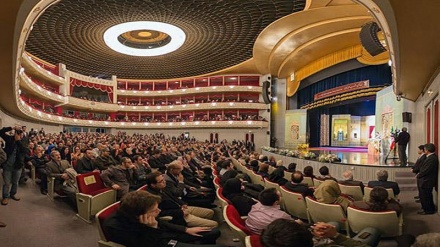Iran Your Attractive Destination (212)
Today, we become familiar with some of Tehran’s restaurants and coffee shops.
As a reminder, in the previous weeks we got to know some of cities in Tehran Province. Iranian cities, including Tehran, are home to a number of coffee shops. Tourists, who travel to Iran, observe numerous coffee shops and traditional eateries throughout their visits to different cities of Iran, which are ready to host guests in pleasant and traditional locations. Given that currently many of Tehran’s famous hotels accommodate traditional coffee shops, which have captured the attention of foreign tourists, we found it appropriate to introduce the history of coffee shops and to familiarize dear listeners with some of the famous coffee shops in Tehran.
The first coffee shops of Iran were established in the Safavid era and most probably during the rule of Safavid King, Shah Tahmasb, in the city of Gazvin, and later throughout the reign of Safavid King, Shah Abbas the First, in the city of Isfahan. In the beginning, only coffee was served in coffee shops. Upon the cultivation of tea in some northern regions of Iran, gradually tea was also served in coffee shops. As of the second half of 13th Century AH, tea was commonly served in coffee shops in Iran and in fact coffee shops turned into tea houses.
In Iran, coffee shops have usually been a place of gathering of people from all walks of life, and members of guilds. Gradually, some coffee shops turned into the place of gathering of particular guilds and groups of people. Every day, people gathered in coffee shops after completion of their daily activities, chatting and exchanging views on social, economic, and political affairs for hours.
In some coffee shops, work and guild related topics were discussed. On auspicious occasions, coffee shops were decorated, which has remained as a common practice to this day. Meanwhile, throughout the nights of the holy month of Ramadan, speeches were delivered in coffee shops. Usually, a large number of locals and residents of other districts gathered in coffee shops and exchanged views in a friendly atmosphere. In this manner, coffee shops turned into social and cultural centers and a venue for development of literary and artistic talents, and presentation of traditional culture to common people. However, gradually coffee shops broke their cultural bonds with age-old traditions, and only turned into venues for drinking tea, eating breakfast and lunch, and resting.
There were numerous coffee shops in the city of Tehran throughout the rule of Qajarid King, Naser Ed-Din Shah, and his successors. The US ambassador to Tehran as of the year 1883-1885 AD, Benjamin T, who held this post concurrent with the rule of Naser Ed-Din Shah, refers to countless coffee shops in Tehran in his travelogue. He notes: There are many coffee shops in Tehran and every one of Tehran’s districts and streets are home to a number of coffee shops, which provide a venue for men to rest and chat. The majority of Tehran’s coffee shops maintain an open-air section for hosting customers within the warm season. These open-air sections are usually full of trees and flowers, and are home to one or several ponds. Meanwhile, the interior of coffee shops were usually adorned with paintings which depicted religious events. The meal which was served in these coffee shops was traditional Iranian dishes, especially meat stews.
Following the victory of Islamic Revolution in Iran, in an effort to maintain cultural heritage, gradually a number of traditional coffee shop were repaired and renovated in order to save the cultural and artistic attractions of these venues. Thus, the traditional architecture of these buildings has been revived. Today, the Iranian and foreign tourists, who attend coffee shops and traditional eateries, become familiar with original Iranian traditions, attires, dishes, working tools, paintings, story-telling, in addition to Iranian-Islamic traditional architecture.
In continuation of today’s episode, some of Tehran’s traditional coffee shops are introduced.
The traditional Azari coffee shop was founded in the year 1948 AD. This coffee shop is located in Tehran’s Raah-Ahan Square and hosts guests on a daily basis. It maintains a traditional architectural style with a dome adorned with plasterworks. The waiters of this coffee shop wear local attire and serve traditional Iranian dishes, coupled with live traditional music. Every year, throughout the holy month of Ramadan, as of Iftar to break of dawn, eulogies are performed by eulogists for guests. Given the valuable traditional architecture of this coffee shop, it has been registered as one of Iran’s national works by the Cultural Heritage Organization.
The traditional restaurant of Sanglaj has been located in one of the oldest parks of Tehran, Park-e Shahr. In this traditional eatery, waiters wear the attires common in Safavid era, serving traditional Iranian dishes.
Amir Kabir traditional coffee shop is situated in northern Tehran, and has been named after Amir Kabir, who was one of the reputable political figures of the Qajarid era. The ceiling of this coffee shop is decorated with plasterworks. The waiters of this coffee shop wear Qajarid era attires, serving tea and a variety of Iranian confectionaries to the guests.
There are several traditional restaurants in Tehran. Malek Restaurant which is located at Tehran’s Shariati Street is one of these traditional eateries. The decorations and dishes served in this restaurant are traditional. The pond in the middle of this restaurant; and poems and pictures of Iranian poets and figures have granted an especial atmosphere to this restaurant.
MR/ME


